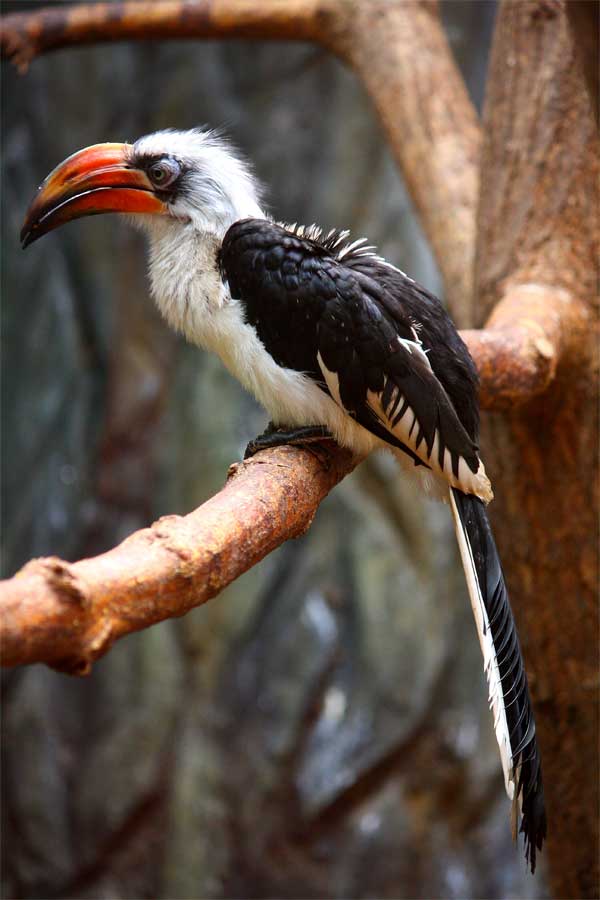
Tockus deckeni (*)
Superregnum: Eukaryota
Regnum: Animalia
Subregnum: Eumetazoa
Cladus: Bilateria
Cladus: Nephrozoa
Superphylum: Deuterostomia
Phylum: Chordata
Subphylum: Vertebrata
Infraphylum: Gnathostomata
Megaclassis: Osteichthyes
Superclassis: Sarcopterygii
Superclassis: Tetrapoda
Cladus: Reptiliomorpha
Cladus: Amniota
Classis: Reptilia
Cladus: Eureptilia
Cladus: Romeriida
Subclassis: Diapsida
Cladus: Sauria
Infraclassis: Archosauromorpha
Cladus: Crurotarsi
Divisio: Archosauria
Cladus: Avemetatarsalia
Cladus: Ornithodira
Subtaxon: Dinosauromorpha
Cladus: Dinosauriformes
Cladus: Dracohors
Cladus: Dinosauria
Ordo: Saurischia
Cladus: Eusaurischia
Cladus: Theropoda
Cladus: Neotheropoda
Cladus: Averostra
Cladus: Tetanurae
Cladus: Avetheropoda
Cladus: Coelurosauria
Cladus: Tyrannoraptora
Cladus: Maniraptoromorpha
Cladus: Maniraptoriformes
Cladus: Maniraptora
Cladus: Pennaraptora
Cladus: Paraves
Cladus: Eumaniraptora
Cladus: Avialae
Infraclassis: Aves
Cladus: Euavialae
Cladus: Avebrevicauda
Cladus: Pygostylia
Cladus: Ornithothoraces
Cladus: Euornithes
Cladus: Ornithuromorpha
Cladus: Ornithurae
Cladus: Carinatae
Parvclassis: Neornithes
Cohors: Neognathae
Ordo: Bucerotiformes
Familia: Bucerotidae
Genus: Tockus
Species: Tockus deckeni
Name
Tockus deckeni (Cabanis, 1868)
References
Journal für Ornithologie 16 p. 413
Vernacular names
čeština: Zoborožec Deckenův
Deutsch: Decken-Toko
English: Von der Decken's Hornbill
français: Calao de von der Decken
lietuvių: Juodasnapis tokas
русский: Черноклювый ток
Von der Decken's hornbill (Tockus deckeni) is a hornbill found in East Africa, especially to the east of the East African Rift, from Ethiopia south to Tanzania. It is found mainly in thorn scrub and similar arid habitats. Jackson's hornbill is often treated as a subspecies of it. It was named after the German explorer Baron Karl Klaus von der Decken (1833–1865).[2]
Description
This species is a small hornbill with blackish upperparts and mainly whitish underparts and head. It has a long tail and a long curved bill which lacks a casque. It is similar to the red-billed hornbill except for the bill colour and the lack of spotting on the wing coverts in both male and female.
The species shows sexual dimorphism; the female has a black bill, whereas the male has a red bill with a cream tip and a black cutting edge.
Breeding
During incubation, the female lays two or three white eggs in a tree hole, which is blocked off with a cement made of mud, droppings and fruit pulp. There is only one narrow aperture, just big enough for the male to transfer food to the mother and chicks.
When the chicks and the female are too big for the nest, the mother breaks out and rebuilds the wall. Then both parents feed the chicks.
Captive breeding can be achieved by providing a small barrel or hollow tree with an entrance hole 5 inches (13 cm) tall and 3 inches (7.6 cm) wide. The birds will block off the hole once the hen is ready.
Food and feeding
Male with a large insect, Serengeti National Park, Tanzania
Von der Decken's hornbill is omnivorous, taking insects, fruit and seeds. It feeds mainly on the ground and will form flocks outside the breeding season. In captivity, Von Der Decken's hornbill will readily eat papaya, cantaloupe, blueberries, bananas, and apples. Live food such as crickets and mealworms should also be offered daily. Small rodents are readily taken but should only be offered two or three times a week.
References
BirdLife International (2016). "Tockus deckeni". IUCN Red List of Threatened Species. 2016: e.T22682392A92943252. doi:10.2305/IUCN.UK.2016-3.RLTS.T22682392A92943252.en. Retrieved 12 November 2021.
Beolens, Bo; Watkins, Michael (2003). Whose Bird? Men and Women Commemorated in the Common Names of Birds. London: Christopher Helm. p. 354.
Retrieved from "http://en.wikipedia.org/"
All text is available under the terms of the GNU Free Documentation License

